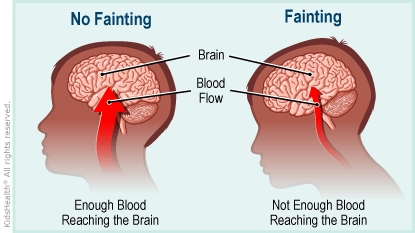Fainting in children, especially adolescents, is common but shouldn't be ignored. In most cases, fainting — also called syncope (SIN-kuh-pee) — is not a sign of a dangerous problem. The health care provider checked your child and made sure that it's safe for your child to go home. Follow the advice of your health care provider about things you can do to help prevent fainting in the future.


Staying Well-Hydrated
Safety
School and Activities


Your child:

Why does fainting happen? A person faints when there isn't enough blood going to the brain because of a drop in blood pressure. Blood pressure can drop for different reasons, such as dehydration, a quick change in position, standing or sitting still for a long period, or a sudden fear of something (such as the sight of blood). A person usually has warning signs (such as a change in vision, dizziness, nausea, looking pale, or sweating) a few seconds before they faint.

What can help prevent fainting? If your child feels like they're going to faint, have them lie down or sit with their head between their knees to help prevent it. They also should:
Should a child have testing after fainting? After a child faints for the first time, health care providers might do a blood test or an electrocardiogram (EKG or ECG). An EKG checks the heart's rhythm.